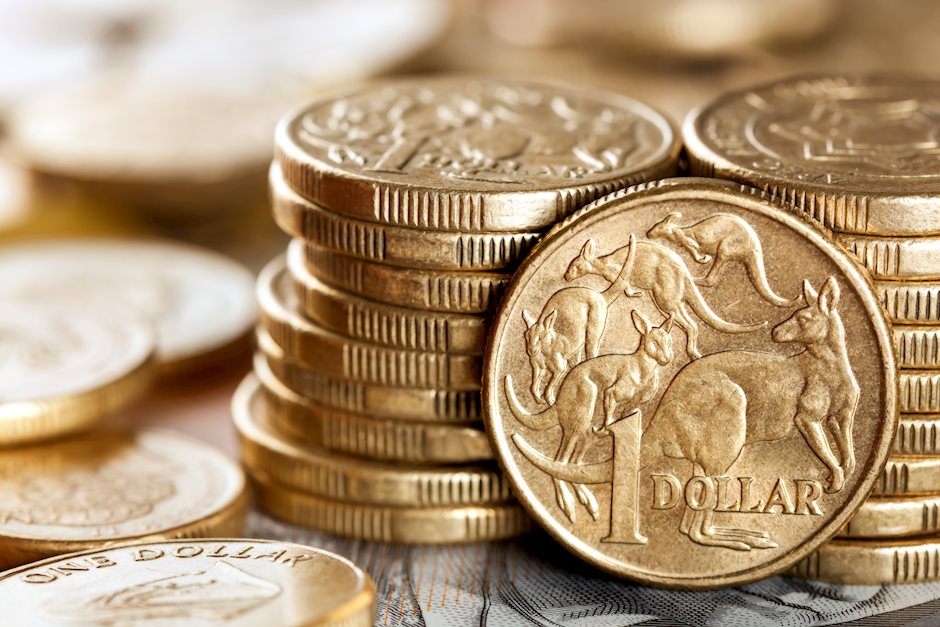Australian Dollar changed its course ahead of inflation data, USD recovers
- The AUD/USD trimmed gains and turned to negative territory towards 0.6230.
- Slower Fed rate cuts keep the US Dollar in check.
- US-China trade war fears also cap Aussie gains.
- Australian inflation data to be released in Wednesday’s session will be key.

The Australian Dollar failed to hold gains against the US Dollar and retreated towards 0.6230 on Tuesday. Expectations of slower Federal Reserve (Fed) rate cuts and firm Treasury yields favor USD bulls while the Reserve Bank of Australia’s (RBA) dovish lean weighs on the Aussie’s upside. The Aussie trims daily gains after the Greenback recovers on strong US data, while traders await Australian inflation data on Wednesday for further direction.
Daily digest market movers: Aussie trims gains after robust US data sparks Dollar recovery
- The USD Index (DXY) hovers near a one-week low as uncertainty surrounds potential sector-specific tariffs under the Trump administration.
- Fed officials maintain a more hawkish stance, slowing the pace of 2025 rate cuts, boosting US Treasury yields.
- Heightened US-China trade war fears and the RBA’s dovish pivot challenge the Australian Dollar’s attempt to extend gains.
- Investors monitor upcoming Federal Open Market Committee (FOMC) minutes and US Nonfarm Payrolls (NFP) for fresh policy clues.
- US JOLTS data revealed 8.09 million job openings in November, surpassing estimates and reflecting a healthy labor market.
- ISM Services PMI climbed to 54.1, beating forecasts of 53.3, while the Prices Paid Index rose sharply, signaling persistent inflation pressures.
- Aussie traders focus on inflation data due Wednesday, which could offer new insight into domestic economic trends and RBA policy expectations.
AUD/USD technical outlook: Aussie eyes 20-day SMA for sustained recovery
The Relative Strength Index (RSI) at 44 shows mild improvement out of oversold territory, while the Moving Average Convergence Divergence (MACD) histogram prints rising green bars. Indicators suggest a nascent recovery, but the pair must confidently break above its 20-day Simple Moving Average (SMA) to confirm a sustained upward move. Without this validation, lingering trade and policy risks may keep bullish momentum in check.
Australian Dollar FAQs
One of the most significant factors for the Australian Dollar (AUD) is the level of interest rates set by the Reserve Bank of Australia (RBA). Because Australia is a resource-rich country another key driver is the price of its biggest export, Iron Ore. The health of the Chinese economy, its largest trading partner, is a factor, as well as inflation in Australia, its growth rate and Trade Balance. Market sentiment – whether investors are taking on more risky assets (risk-on) or seeking safe-havens (risk-off) – is also a factor, with risk-on positive for AUD.
The Reserve Bank of Australia (RBA) influences the Australian Dollar (AUD) by setting the level of interest rates that Australian banks can lend to each other. This influences the level of interest rates in the economy as a whole. The main goal of the RBA is to maintain a stable inflation rate of 2-3% by adjusting interest rates up or down. Relatively high interest rates compared to other major central banks support the AUD, and the opposite for relatively low. The RBA can also use quantitative easing and tightening to influence credit conditions, with the former AUD-negative and the latter AUD-positive.
China is Australia’s largest trading partner so the health of the Chinese economy is a major influence on the value of the Australian Dollar (AUD). When the Chinese economy is doing well it purchases more raw materials, goods and services from Australia, lifting demand for the AUD, and pushing up its value. The opposite is the case when the Chinese economy is not growing as fast as expected. Positive or negative surprises in Chinese growth data, therefore, often have a direct impact on the Australian Dollar and its pairs.
Iron Ore is Australia’s largest export, accounting for $118 billion a year according to data from 2021, with China as its primary destination. The price of Iron Ore, therefore, can be a driver of the Australian Dollar. Generally, if the price of Iron Ore rises, AUD also goes up, as aggregate demand for the currency increases. The opposite is the case if the price of Iron Ore falls. Higher Iron Ore prices also tend to result in a greater likelihood of a positive Trade Balance for Australia, which is also positive of the AUD.
The Trade Balance, which is the difference between what a country earns from its exports versus what it pays for its imports, is another factor that can influence the value of the Australian Dollar. If Australia produces highly sought after exports, then its currency will gain in value purely from the surplus demand created from foreign buyers seeking to purchase its exports versus what it spends to purchase imports. Therefore, a positive net Trade Balance strengthens the AUD, with the opposite effect if the Trade Balance is negative.
Author

Patricio Martín
FXStreet
Patricio is an economist from Argentina passionate about global finance and understanding the daily movements of the markets.

















